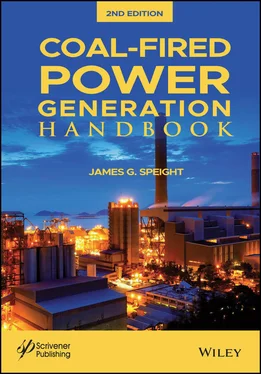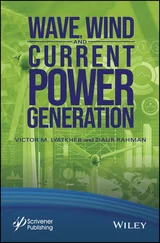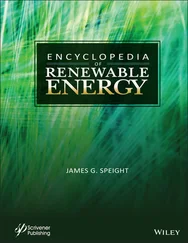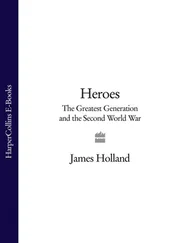Currently, the United States is an exporter of crude oil and crude oil products but the question remains related to the longevity of such a situation. In addition, US dependence on crude oil has increased in recent years and this indicates two possible areas of concern regarding the extent to which crude oil influences energy security: (i) the increase in the crude oil share of energy use, and (ii) the inability or unwillingness of the United States to reduce dependence on oil. It is because of such variations that the potential of gasification must be considered as an option for energy production, particularly for the production of liquid fuels and chemicals.
For many decades, coal has been the primary feedstock for power generation but due to recent concerns related to the use of fossil fuels and the resulting environmental pollutants, irrespective of the various gas cleaning processes and gasification plant environmental cleanup efforts, there is a move to feedstocks other than coal for gasification processes (Speight, 2013). Indeed, the mounting interest in the use of mixed-coal feedstocks and non-coal feedstocks for power generation reflects the potential for lower cost control of greenhouse gases than other coal-based systems.
Furthermore, power generation units can accept a variety of feedstocks but the reactor must be selected on the basis of feedstock properties and behavior in the process. Also, the disposal of municipal and industrial waste has become an important problem because the traditional means of disposal, landfill, are much less environmentally acceptable than previously. Much stricter regulation of these disposal methods will make the economics of waste processing for resource recovery much more favorable. A method of processing waste streams is to convert the energy value of the combustible waste into a fuel. One type of fuel attainable from waste is a low heating value gas, usually 100 to 150 Btu/scf, which can be used to generate process steam or to generate electricity.
Waste may be municipal solid waste (MSW) which had minimal presorting, or refuse- derived fuel (RDF) with significant pretreatment, usually mechanical screening, and shredding. Other more specific waste sources (excluding hazardous waste) and possibly including crude oil coke, may provide niche opportunities for co-utilization. The traditional waste to energy plant, based on mass-burn combustion on an inclined grate, has a low public acceptability despite the reduction in the emissions achieved over the last decade with modern flue gas clean-up equipment. This has led to difficulty in obtaining planning permissions to construct needed new waste to energy plants. After much debate, various governments have allowed options for advanced waste conversion technologies (gasification, pyrolysis, and anaerobic digestion), but will only give credit to the proportion of electricity generated from non-fossil waste.
Co-utilization of waste and biomass with coal may provide economies of scale that help achieve the above identified policy objectives at an affordable cost. In some countries, governments propose mixed feedstock processes as being well suited for community-sized developments, suggesting that waste should be dealt with in smaller plants serving towns and cities, rather than moved to large, central plants (satisfying the so-called proximity principal ).
Use of waste materials as feedstocks for power generation may attract significant disposal credits. Cleaner biomass materials are renewable fuels and may attract premium prices for the electricity generated. Availability of sufficient fuel locally for an economic plant size is often a major issue, as is the reliability of the fuel supply. Use of more-predictably available coal alongside these fuels overcomes some of these difficulties and risks. Coal could be regarded as the flywheel which keeps the plant running when the fuels producing the better revenue streams are not available in sufficient quantities.
Ashton, T.S. 1969. The Industrial Revolution . Oxford University Press, Oxford United Kingdom. ASTM D388. Standard Classification of Coals by Rank. Annual Book of Standards . American Society for Testing and Materials. West Conshohocken, Pennsylvania.
ASTM D3175. Standard Test Method for Volatile Matter in the Analysis Sample of Coal and Coke. Annual Book of Standards. American Society for Testing and Materials. West Conshohocken, Pennsylvania.
BP. 2019. BP Statistical Review of World Energy . BP PLC, London, United Kingdom. https://www.bp.com/content/dam/bp/business-sites/en/global/corporate/pdfs/energy-economics/statistical-review/bp-stats-review-2019-full-report.pdf
Cohen, A.D. 1970. An Allochthonous Peat Deposit from Southern Florida. Bulletin, Geological Society of America , 81: 2477-2482.
DOE/EIA. 1995. Coal Data: A Reference . Report No. DOE/EIA-0064(93). Energy Information Administration, United States Department of Energy, Washington, DC.
Dublin, T., and Licht, W. 2005. The Face of Decline: The Pennsylvania Anthracite Region in the Twentieth Century . Cornell University Press, Ithaca, New York.
Elphick, J.O. and Suggate, R.P. 1964. Depth/Rank Relations of High-Volatile Bituminous Coals. New Zealand Journal of Geology and Geophysics , 7(3): 594-601.
Energy Information Administration. 2010. Annual Coal Report 2010 – Revised 2012. International Energy Outlook. 2011. Report No. DOE/EIA-0584(2010). Energy Information Administration, Unites States Department of Energy, Washington, DC. July.
Energy Information Administration. 2011. International Energy Outlook. 2011. Report No. DOE/EIA-0484(2011). Energy Information Administration, Unites States Department of Energy, Washington, DC. September.
Energy Information Administration. 2012a. Annual Energy Outlook. 2012 with Projections to 2035. Report No. DOE/EIA-0383(2012). Energy Information Administration, Unites States Department of Energy, Washington, DC. June.
Energy Information Administration. 2012b. International Energy Outlook. 2012. Report No. DOE/EIA-03834(20121). Energy Information Administration, Unites States Department of Energy, Washington, DC. September.
EWG. 2007. Coal: Resources and Future Production . EWG-Paper No. 1/07. Energy Watch Group, Berlin, Germany.
Freese, B. 2003. Coal: A Human History . Perseus Publishing Company, Cambridge Massachusetts.
GAO. 2012. Electricity: Significant Changes Are Expected in Coal-Fueled Generation, but Coal is Likely to Remain a Key Fuel Source. Report GAO-13-72. Report to the Chairman, Committee on Commerce, Science, and Transportation, U.S. Senate. United States Government Accountability Office, Washington, DC.
Hessley, R.K. 1990. In Fuel Science and Technology Handbook . J.G. Speight (Editor). Marcel Dekker Inc., New York.
Höök, M., and Aleklett, K. 2009. Historical Trends in American Coal Production and a Possible Future Outlook. International Journal of Coal Geology , 78(3): 201-216.
Hordeski, M.F. 2008. Alternative Fuels: The Future of Hydrogen . 2 ndEdition. CRC Press, Taylor & Francis Group, Boca Raton, Florida.
Horwitch, M. 1979. In Energy Future . R. Stobaugh and D. Yergin (Editors). Random House Inc., New York.
Hubbard, H.M. 1991. Scientific American . 264(4): 36.
Читать дальше












